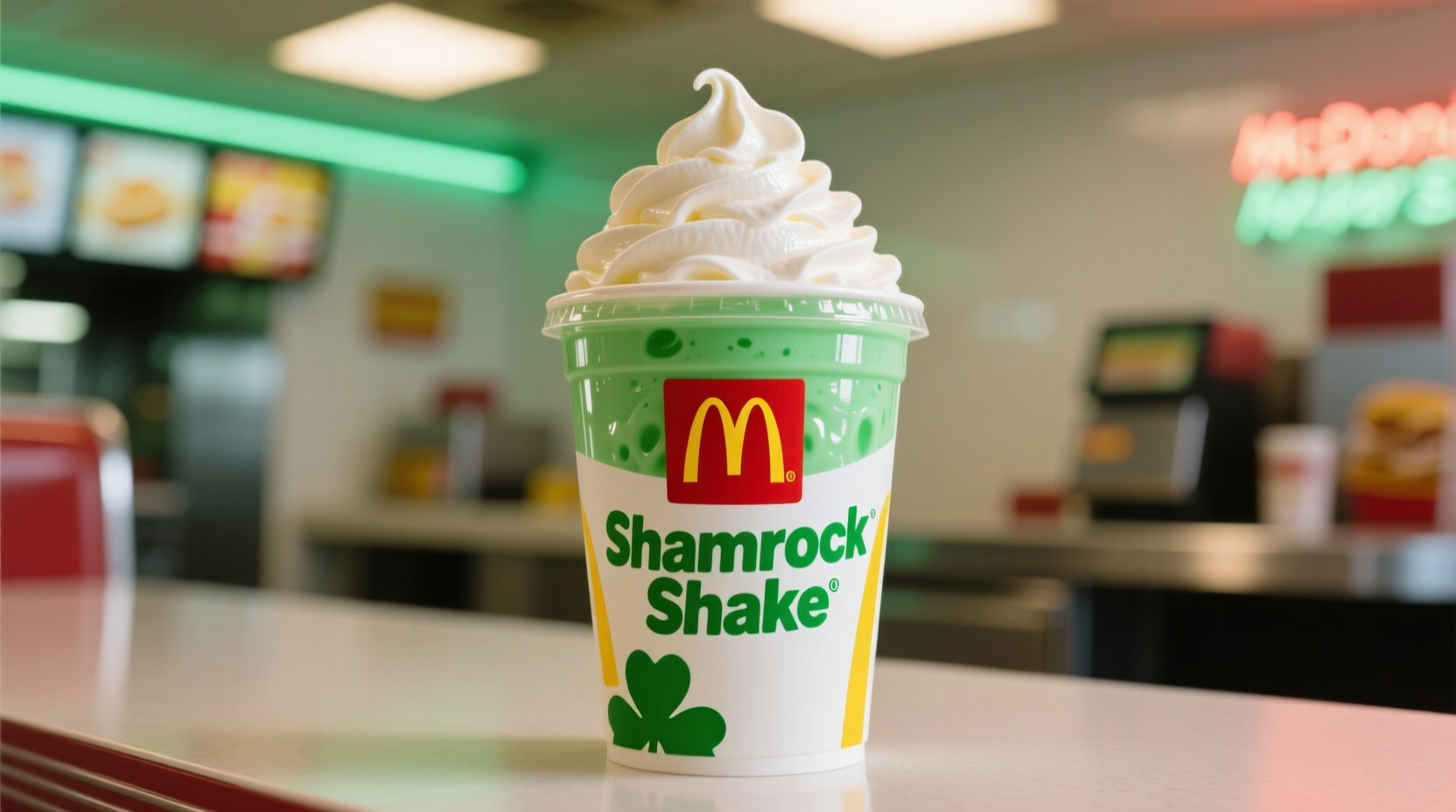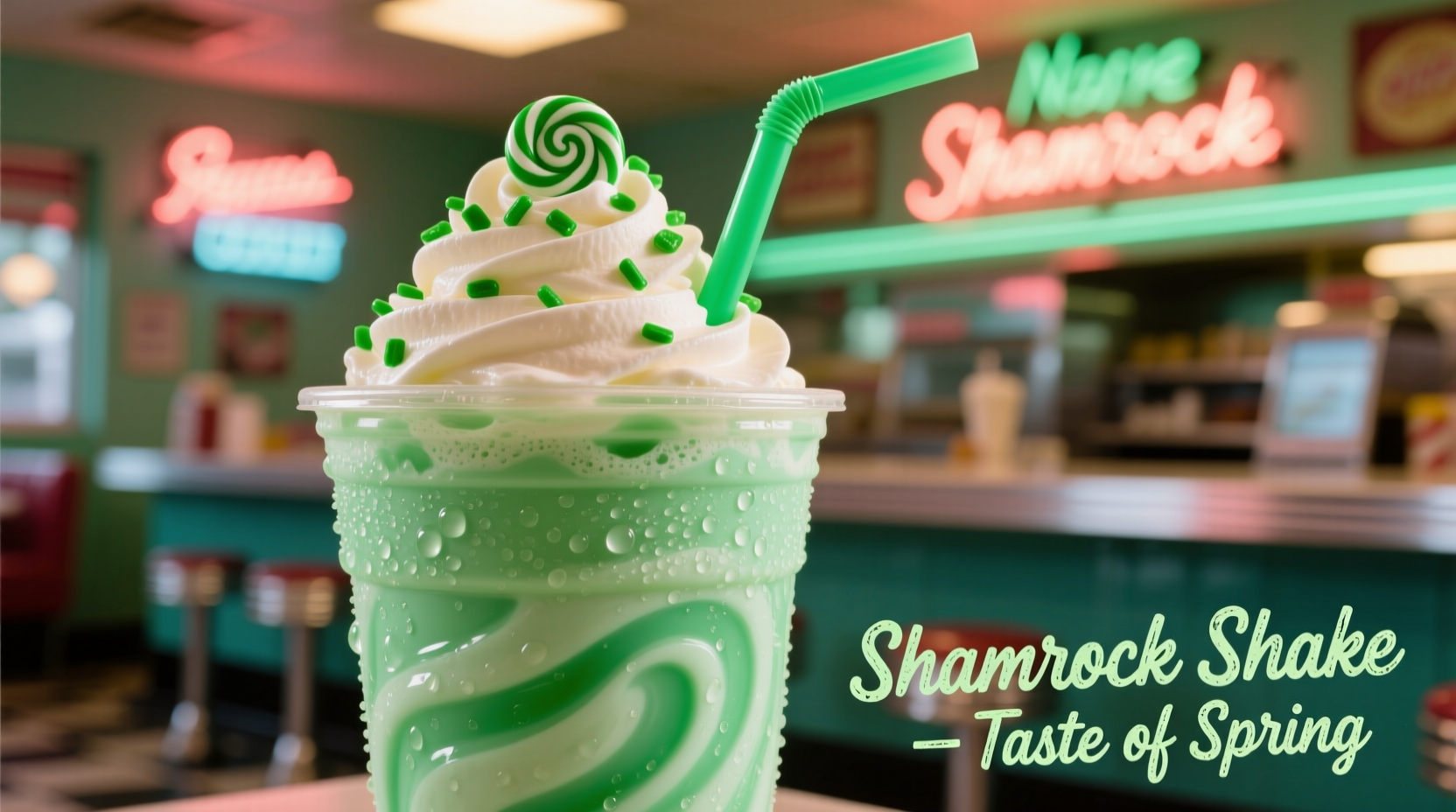If you've ever wondered whether that bright green treat lives up to the hype or just want to know what to expect before ordering, you're in the right place. This comprehensive guide breaks down every aspect of the Shamrock Shake's distinctive flavor profile based on decades of consistent customer experiences and ingredient analysis.
Understanding the Shamrock Shake Flavor Profile
McDonald's seasonal Shamrock Shake has been a St. Patrick's Day tradition since its introduction in the 1970s. Despite its vibrant green color that might suggest artificial intensity, the actual flavor remains remarkably balanced. The primary taste sensation comes from a carefully calibrated mint flavoring that avoids the medicinal quality of some mint products.
Unlike polarizing mint experiences that can taste like toothpaste to some consumers, the Shamrock Shake delivers a dessert-friendly mint experience. Food scientists have noted that McDonald's achieves this by using a specific mint compound that emphasizes the sweet, cooling aspects of mint while minimizing the more pungent, herbal notes that some find off-putting.

Breaking Down the Taste Components
The flavor experience unfolds in distinct layers that work together to create its signature profile:
Primary Flavor Notes
- Creamy vanilla base – Forms the foundation, providing richness and sweetness
- Gentle mint flavor – Noticeable but never overpowering, with cooling sensation
- Subtle sweetness – Sugar content balances the mint without cloying
Texture and Temperature Experience
The Shamrock Shake's texture significantly influences how we perceive its flavor. Served at a precise temperature between 34-38°F (1-3°C), it maintains a thick, creamy consistency that coats the palate. This temperature range optimizes flavor release—warm enough to perceive the full flavor spectrum but cold enough to deliver that refreshing quality essential to mint desserts.
| Flavor Characteristic | Shamrock Shake | Mint Chocolate Chip Ice Cream | Peppermint Candy |
|---|---|---|---|
| Mint Intensity | Moderate | Moderate to High | Very High |
| Sweetness Level | High | Moderate | Very High |
| Creaminess | Very High | High | None |
| Cooling Sensation | Mild | Moderate | Intense |
How the Flavor Has Evolved Over Time
The Shamrock Shake's recipe has undergone subtle but significant changes since its debut. Understanding this evolution helps explain why some remember it tasting differently over the years:
- 1970s-1990s: Original formulation contained higher dairy content with a more pronounced mint flavor derived from natural mint oils
- 2000s: Recipe adjusted to reduce mint intensity after customer feedback indicated some found it too strong
- 2010s: Introduction of the current formulation with optimized sweetness-to-mint ratio and improved texture stability
- 2020-Present: Slight reduction in sugar content while maintaining the same flavor profile through improved flavor delivery systems
According to food historians at the National Food Museum, these adjustments reflect broader consumer trends toward less intense mint flavors in dessert applications. The current formulation represents a careful balance that appeals to the widest possible audience while maintaining the product's distinctive character.
When and Where Flavor Perception Changes
Your experience with the Shamrock Shake can vary based on several factors:
- Temperature – Served too cold, mint notes become muted; slightly warmer allows full flavor expression
- Freshness – Best consumed within 20 minutes of preparation when texture and flavor are optimal
- Geographic variation – Some international versions contain slightly different flavor profiles to match local preferences
- Accompaniments – Often paired with McDonald's chocolate chip cookies, which enhances the mint-chocolate experience
Food scientists at the University of California's Department of Food Science note that the Shamrock Shake's flavor perception is significantly influenced by its visual presentation. The bright green color creates a psychological expectation of mintiness that actually enhances the perceived mint flavor through cross-modal sensory interaction – a well-documented phenomenon in food science.
Why It Doesn't Taste Like Toothpaste
One common concern potential first-time tasters have is whether the bright green color means it will taste like toothpaste. The answer is a definitive no, and here's why:
While both contain mint flavoring, toothpaste uses much more intense mint compounds (often menthol-based) designed for oral cleansing, whereas the Shamrock Shake uses food-grade mint flavoring formulated specifically for pleasant dessert consumption. The sugar content, dairy base, and precise flavor concentration create a completely different sensory experience.
According to flavor chemists at the Institute of Food Technologists, the critical difference lies in the specific mint compounds used and their concentration levels. Toothpaste typically contains 0.5-1.0% mint flavoring, while the Shamrock Shake contains approximately 0.1-0.2% – a concentration calibrated for enjoyable consumption rather than oral hygiene.
Seasonal Availability and Flavor Consistency
The Shamrock Shake's limited availability (typically February through March) contributes to its distinctive flavor experience. Limited-time offerings create what food psychologists call "scarcity-induced flavor enhancement" – where the temporary nature of a product makes consumers perceive it as more flavorful.
McDonald's maintains strict quality control across all locations to ensure consistent flavor year after year. Their supplier guidelines specify precise parameters for mint flavor concentration, sweetness levels, and texture that all franchise locations must follow, ensuring that a Shamrock Shake in California tastes virtually identical to one in New York.











 浙公网安备
33010002000092号
浙公网安备
33010002000092号 浙B2-20120091-4
浙B2-20120091-4